
Kingpin - avagy hogyan vette át az uralmat egy hacker a milliárddolláros cyberal
¥57.14
Основные принципы лечебного питания и советы по подбору продуктов Рецепты вкусных блюд, эффективных в борьбе с болезнями Очень часто мы полагаемся на таблетки и лекарства, хотя действенные и полезные средства от недугов всегда под рукой! Рецепты блюд, приведенные в книге, позволят вам отказаться от большинства медикаментов. Блюда содержат множество целебных веществ и помогут не только поддержать здоровье, но и излечить подагру и диабет, болезни сердца и сосудов, суставов и позвоночника, печени, почек, щитовидной и поджелудочной железы. Вы сможете составить индивидуальное меню здорового питания. Здесь представлены рецепты супов, блюд из мяса, рыбы, грибов, овощей, круп, молочных продуктов и т. д. Используются только доступные ингредиенты. Готовьте с нашей книгой – и избавляйтесь от болезней! Osnovnye principy lechebnogo pitanija i sovety po podboru produktov Recepty vkusnyh bljud, jeffektivnyh v bor'be s boleznjami Ochen' chasto my polagaemsja na tabletki i lekarstva, hotja dejstvennye i poleznye sredstva ot nedugov vsegda pod rukoj! Recepty bljud, privedennye v knige, pozvoljat vam otkazat'sja ot bol'shinstva medikamentov. Bljuda soderzhat mnozhestvo celebnyh veshhestv i pomogut ne tol'ko podderzhat' zdorov'e, no i izlechit' podagru i diabet, bolezni serdca i sosudov, sustavov i pozvonochnika, pecheni, pochek, shhitovidnoj i podzheludochnoj zhelezy. Vy smozhete sostavit' individual'noe menju zdorovogo pitanija. Zdes' predstavleny recepty supov, bljud iz mjasa, ryby, gribov, ovoshhej, krup, molochnyh produktov i t. d. Ispol'zujutsja tol'ko dostupnye ingredienty. Gotov'te s nashej knigoj – i izbavljajtes' ot boleznej!

Торты нашего детства. Мамочкина вкуснятина!
¥17.99
Книга объединяет два главных прижизненных издания основателя и ярчайшего представителя поэзии абсурда. Эдвард Лир (1812-1888) – прославленный английский поэт и художник, отец литературного лимерика, жанра, оказавшего заметное влияние на литературу конца XIX и всего XX века. Лимерики (216 забавных пятистиший) приведены на языке оригинала с параллельными переводами, выполненными лучшим российским интерпретатором поэзии нонсенса Борисом Архипцевым, и сопровождаются авторскими иллюстрациями. Переводчик посвятил работе более 20 лет жизни, добившись уникального результата, невиданной прежде полноты раскрытия авторского замысла в сочетании с красотой и естественностью звучания русского стиха. ?…Архипцев переводит Эдварда Лира, как благочестивый толковник – Писание: он передает и смысл, и звук. Точен – часто до мельчайших деталей. Звучен – до самой лихой эквилибристики…??Н. Горбаневская. Книга погружает читателя в атмосферу тонкого английского юмора, превосходно переданного переводчиком, в мир абсурда, делая его близким и понятным человеку любого возраста – от младшего школьного до старшего пенсионного. Издательство Animedia Company желает вам приятного чтения.

Плетем из газетных трубочек. Мебель
¥17.74
Andersena pasakas: ?Lakstīgala”, ?Sliktais princis”, ?Rū?ītis”. Trīs brīni??īgas, visiem zināmas un lasītāju iecienītas pasakas vienā grāmati?ā. ?Lakstīgala” - tā ir skaista pasaka par necilu putni?u, kas dzīvoja kāda ?īnas ?eizara dārzā. Lakstīgalas burvīgās dziesmas spēja sagādāt ne tikai prieku, bet arī dziedināja slimo ?eizaru. ?? ?Sliktais princis” – ?ī pasaka vēstī par cietsirdīgu un ne?ēlīgu valdnieku, kur? nolēma gūt varu pār visu pasauli, pastāvīgi karojot. ?Rū?ītis” – tas ir stāsts par elfu, kur? pārticībā dzīvoja bagāta tirgotāja mājā un kuru sajūsmināja nabadzīga studenta, grāmatu un dzejas cienītāja, pasaule. ? Andersena pasakas ir burvju stāsti, kuros apslēptas svarīgas patiesības un morāles vērtības. Tās iepriecina mūsdienu bērnus tāpat kā pirms gadiem vi?u vecākus un vecvecākus.? Katra pasaka ir veidota ar skaistām un krāsainām ilustrācijām.

Na paraye 'ham: Nem tudom visszafizetni nektek
¥81.67
Маг?я Анджея Сапковського — у його вм?нн? з л?ризмом ? сарказмом створити уявний св?т, кожен з мешканц?в якого, кожне м?сце ? кожна под?я наст?льки нагадують нам св?т реальний, сучасний, що в?д?рватися в?д книжок неможливо. Дуже давно, коли людська раса т?льки обживала ворожий св?т, а маги у сво?х вежах займалися лише високою наукою чар?вництва, було створено г?льд?ю в?дьмак?в — рем?сник?в в?д маг??, яких навчали вбивати темн? породження потойб?ччя: в??в ? в?ппер?в, мантикор ? гул?в, грифон?в ? брукс-вамп?риць. Але з часом страшних почвар меншало, меншало й тих, хто мусив захищати в?д них людей, — ? дедал? част?ше в?дьмакам у спину лет?ли з-за паркан?в прокльони та кам?ння. В?д Яруги до Драконячих г?р мандру? один з останн?х в?дьмак?в — ?еральт ?з Р?в??, зустр?чаючи людей та ?стот, як? чимось дуже нагадують персонаж?в в?домих казок, та намагаючись зрозум?ти, чи залишилося у ньому самому хоч щось в?д людини, чи в?н — т?льки додаток до двох сво?х меч?в: звичайного зал?зного та в?дьмачого, з карбованим рук?в’ям та ср?бним клинком, який колись стане для нього мечем призначення… Mag?ja Andzheja Sapkovs'kogo — u jogo vm?nn? z l?rizmom ? sarkazmom stvoriti ujavnij sv?t, kozhen z meshkanc?v jakogo, kozhne m?sce ? kozhna pod?ja nast?l'ki nagadujut' nam sv?t real'nij, suchasnij, shho v?d?rvatisja v?d knizhok nemozhlivo. Duzhe davno, koli ljuds'ka rasa t?l'ki obzhivala vorozhij sv?t, a magi u svo?h vezhah zajmalisja lishe visokoju naukoju char?vnictva, bulo stvoreno g?l'd?ju v?d'mak?v — rem?snik?v v?d mag??, jakih navchali vbivati temn? porodzhennja potojb?chchja: v??v ? v?pper?v, mantikor ? gul?v, grifon?v ? bruks-vamp?ric'. Ale z chasom strashnih pochvar menshalo, menshalo j tih, hto musiv zahishhati v?d nih ljudej, — ? dedal? chast?she v?d'makam u spinu let?li z-za parkan?v prokl'oni ta kam?nnja. V?d Jarugi do Drakonjachih g?r mandru? odin z ostann?h v?d'mak?v — ?eral't ?z R?v??, zustr?chajuchi ljudej ta ?stot, jak? chimos' duzhe nagadujut' personazh?v v?domih kazok, ta namagajuchis' zrozum?ti, chi zalishilosja u n'omu samomu hoch shhos' v?d ljudini, chi v?n — t?l'ki dodatok do dvoh svo?h mech?v: zvichajnogo zal?znogo ta v?d'machogo, z karbovanim ruk?v’jam ta sr?bnim klinkom, jakij kolis' stane dlja n'ogo mechem priznachennja…

Строим за один сезон дачный домик, гараж, времянку
¥8.83
Ця книга приведе вас до одно? дивовижно? думки: те, що, на наш погляд, найб?льше заважа? нам реал?зувати найдужч? наш? бажання, може насправд? пришвидшити ?хн? зд?йснення. Установки на позитивне мислення здобули популярн?сть не лише в адепт?в нейро-л?нгв?стичного програмування, але й у запеклих оптим?ст?в ? мр?йник?в. Однак на практиц? при?мн? оч?кування чомусь не зд?йснюються. Чому так в?дбува?ться, що ста? перепоною для досягнення бажаного ? як уникнути негативних насл?дк?в – основн? питання, на як? авторка в?дпов?да? детально й аргументовано, використовуючи дан? найнов?ших наукових досл?джень. Окр?м того, вона розпов?да? ц?кав? ?стор?? з життя, в?дстежуючи причинно-насл?дков? зв’язки м?ж оч?куваннями та результатами.

Делаем заборы, изгороди
¥8.83
Нова сер?я ?Класика? знайомить ?з найвидатн?шими зразками св?тово? та укра?нсько? л?тератури. П?д псевдон?мом В. Таль сховався письменник В?тал?й Товстон?с (1883–1936). Його захоплива пригодницька пов?сть ?Незвичайн? пригоди бурсак?в?, яка востанн? видавалася у 1929 роц?, сяга? у козацьк? часи, а саме у р?к зруйнування С?ч? – 1775. Дво? бурсак?в т?кають з бурси на С?ч ? дорогою переживають безл?ч пригод. Зокрема допомагають селянам п?дняти повстання проти пом?щицьких утиск?в, проявивши себе справжн?ми козаками. Для широкого кола читач?в.

Сооружаем уютную беседку, веранду, террасу
¥8.83
Б?знес-гуру, ?нвестор Кремн??во? долини, американський п?дпри?мець Бен Горов?ц написав в?дверту книгу про б?знес, не под?бну до сотн? видань штибу ?Як створити власну справу ? досягнути усп?ху?. ??Автор не пропону? готових рецепт?в усп?ху й аргументовано поясню?, чому таких рецепт?в не ?сну?. Горов?ц розпов?да?, що в б?знес?, як ? в житт?, передус?м потр?бно розмежовувати сво? сприйняття ? факти, особисте та профес?йне, ? тод? нав?ть р?шення зв?льнити кращого товариша н? для кого не стане катастрофою. Нав?ть якщо п?д вашим кер?вництвом працю? найталановит?ший прац?вник, який здобув визнання у профес?йних колах, саме ви вир?шу?те, чи потр?бен його нестерпний характер ? великий талант ваш?й компан??.??Увесь св?й досв?д керування людьми, боротьбу з ?хн?ми ?нтригами, пошуки найкращих фах?вц?в Бен Горов?ц пода? як ?нструкц?ю до д??, зрозум?лу кожному. Б?знес-д?йсн?сть — нещадна, наче життя у гетто, про яке сп?вають часто цитован? автором репери. А ваш? шанси виграти дор?внюють шансам програти. Тому ця книга не для тих, хто шука? легких в?дпов?дей, а для тих, хто зна?: запитань завжди б?льше, н?ж в?дпов?дей, а перемагають у б?знес? т?льки найв?дважн?ш?.??

A férfi hanyatlása és bukása
¥76.07
Mindenkinél elérkezik egyszer az az id?pont az életében, hogy visszatekint. Ez nálam akkor érkezett el, amikor is bet?lt?ttem azt a bizonyos ?tvenet. Mindig jó tanuló voltam, így nem az ?t?ssel kezd?d? szám volt a sért?n mérvadó számomra. Inkább azon gondolkodtam, elmélkedtem, hogy ennyi évb?l már kell tudni levonni tanulságokat. Nehogy újra és újra elk?vessem ugyan azokat a hibákat. Hisz én nem egy mókuskerékben vagyok, ugye? Rengeteg mindent sikerült meg és átélnem, megértenem és értelmeznem. Ezekb?l szeretnék egy-egy csokrot átnyújtani olvasásra, vagy mondhatnám azt is, tanulságul. Imádom a verseket, sokszor úgy ébredek reggel, hogy csak úgy tolonganak a gondolataimban a szavak és mondatok elegye arra várva, hogy ki és leírjam ?ket. Pontosan én sem tudom honnan is j?nnek, ki is küldte, küldi nekem, de biztosan céllal teszi azt! A versek és a novellák, az elbeszélések adják a k?nyvem szivárványos sokszín?ségét, a n?i lélek érzékenységével és érzékiségével egyetemben. Szeretem látni az emberek arcán azt a kül?n?s mosolyt, amikor verseket olvasva, annak érzelemvilága ?ssze?lelkezik az ? lelkükkel. Engedjük, hagyjuk, merjünk mosolyogni!

Egyikünk hazudik
¥69.65
Rudi mind?ssze 18 éves volt, amikor dolgozni kezdett a f?városi éjszakában. Egy men? belvárosi diszkó pohárszed?jeként alig tízezer forint volt a fizetése. Az évek során azonban egyre feljebb került a ranglétrán, s mire észbe kapott, a budapesti alvilág egyik kulcsfigurájának, az éjszaka császárának is nevezett Tolnai Tamás legbels?bb k?rében találta magát. A politikusokat és rend?r?ket a kezében tartó, üzleti riválisait brutális módszerekkel megsemmisít? f?n?kre apaként nézett fel, mellette érett férfivá. Neki k?sz?nhette az ekkor már másfélmilliós havi bérét, a 80 százalékos tisztaságú kokaint, a glammodelleknek álcázott prostituáltak és gengszterek társaságát, meg egy 38-as kaliber? Smith & Wessont. Rudi vakon k?vette f?n?két a t?rvénytelenség útján. Bár id?vel sejtette, a vesztébe rohan, csak akkor mert szembeszállni vele, amikor kis híján halálra késelték. De ekkor már ahhoz is volt elég bátorsága, hogy saját szabadságáért cserébe elárulja valamikor eszményképét, az éjszaka császárát. Igaz t?rténet alapján.
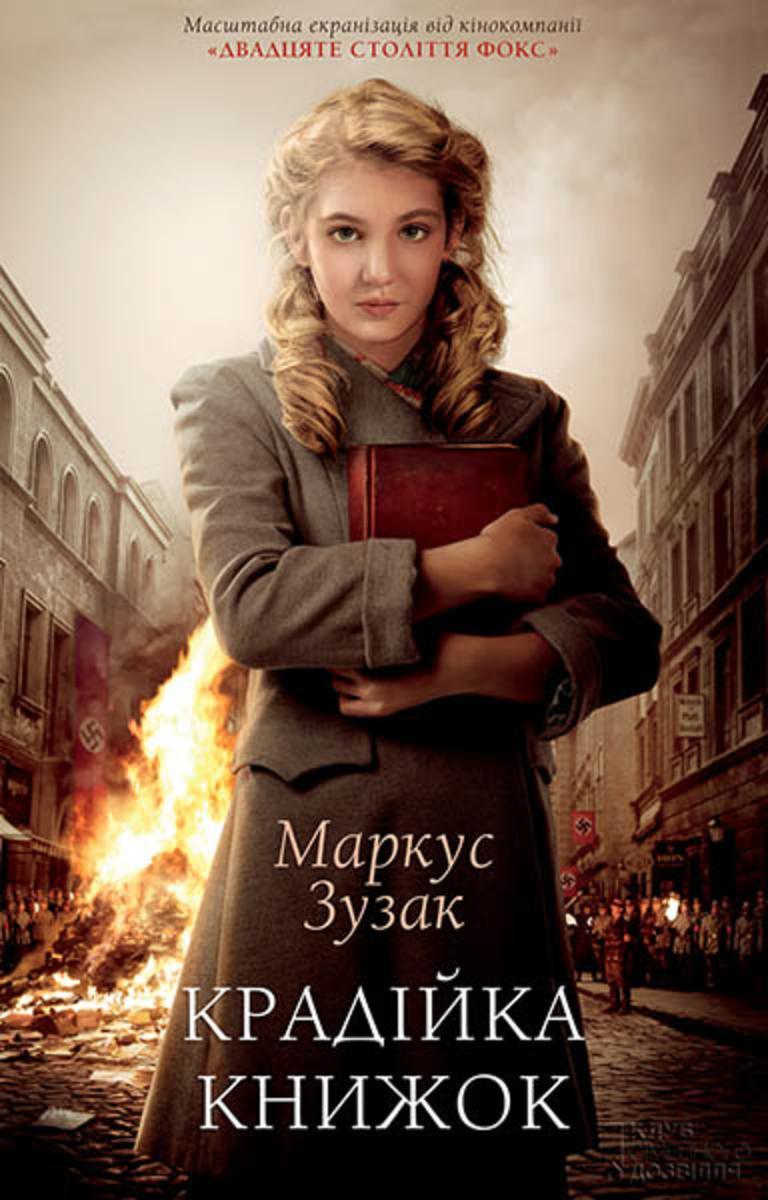
Крад?йка книжок (Krad?jka knizhok)
¥17.74
Что может быть общего между Ветхим Заветом и нашей жизнью начала XXI века? Как могут пересечься пути Господни и, скажем, Главного Разведывательного Управления? Почему русский роман назван французским словом ?Analyste? (?Аналитик?)?????Во многом необычное произведение Андрея М. Мелехова – это путешествие туда, где редко бывают живые и откуда никогда не возвращаются умершие. Вернее, почти никогда. Действие романа начинается в африканской стране Ангола, в которой в наши дни мало что напоминает о временах холодной войны. Кроме, разве что оружия советского производства, да теперь уже российских военных разведчиков. Но помимо Африки читателю предстоит побывать в гораздо более далёких и загадочных местах…????Андрей М. Мелехов – это литературный псевдоним человека, настоящее имя которого известно, скорее, в сфере бизнеса бывшего СССР. Он учился и работал в Англии и США, несколько лет прослужил в Советской Армии, выполняя интернациональный долг всё в той же Анголе. ?Аnalyste? – это не детектив, а попытка ответить на волнующие его вопросы жизни, смерти и совести.??Вам предлагается новая редакция романа.??
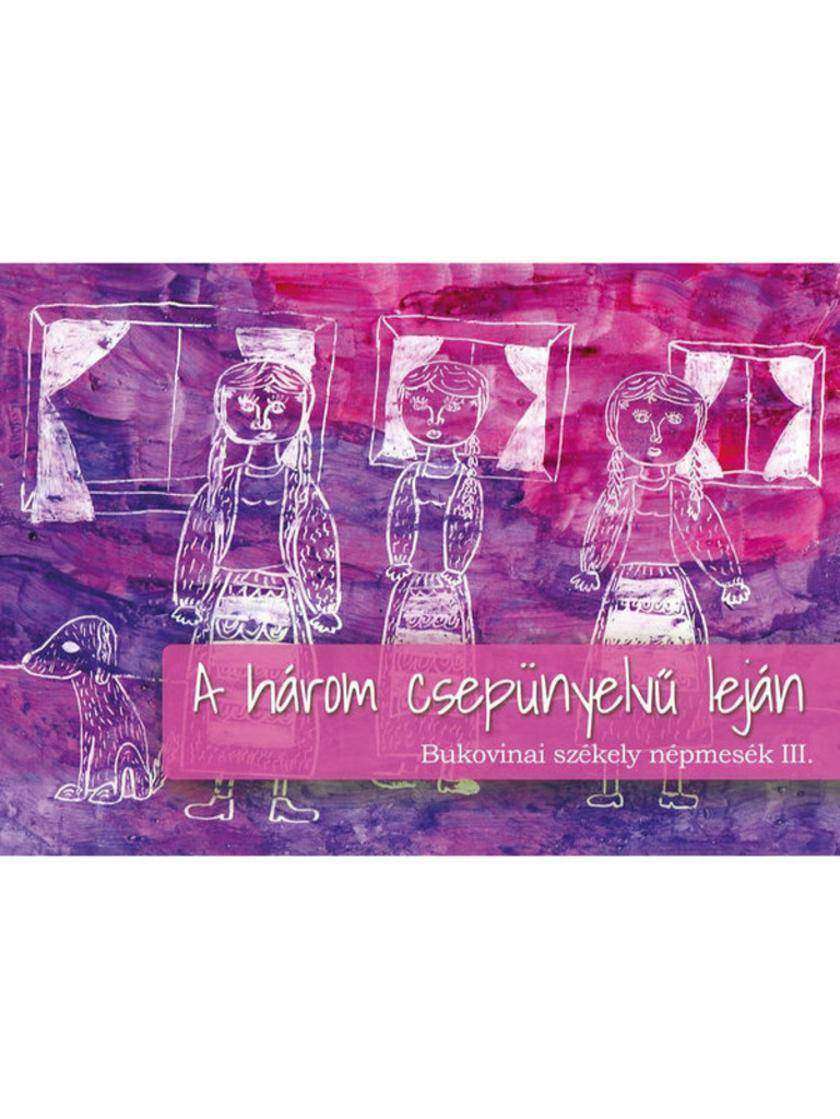
A három csepünyelv? leján: Bukovinai székely népmesék III.
¥32.05
Перед ароматом домашней выпечки не устоит никто! Слюнки потекут уже от одних названий – хачапури по-аджарски, творожный тарт с грушей, сливовый пирог, самса с мясом, слоеный пирог с рыбой – все они станут вашими любимыми блюдами! Здесь вы найдете множество рецептов открытых и закрытых пирогов, закусочной и сладкой выпечки из песочного, слоеного, дрожжевого, бисквитного теста с различными начинками. Зоряна Ивченко ведет популярный кулинарный блог. Ее лучшие рецепты вошли в книги, ставшие бестселлерами: ?Пиццы и открытые пироги?, ?Домашние сладости и конфеты? и др. Вместе с автором вы приготовите из привычных продуктов вкусные и красивые блюда.Pered aromatom domashnej vypechki ne ustoit nikto! Sljunki potekut uzhe ot odnih nazvanij – hachapuri po-adzharski, tvorozhnyj tart s grushej, slivovyj pirog, samsa s mjasom, sloenyj pirog s ryboj – vse oni stanut vashimi ljubimymi bljudami! Zdes' vy najdete mnozhestvo receptov otkrytyh i zakrytyh pirogov, zakusochnoj i sladkoj vypechki iz pesochnogo, sloenogo, drozhzhevogo, biskvitnogo testa s razlichnymi nachinkami. Zorjana Ivchenko vedet populjarnyj kulinarnyj blog. Ee luchshie recepty voshli v knigi, stavshie bestsellerami: ?Piccy i otkrytye pirogi?, ?Domashnie sladosti i konfety? i dr. Vmeste s avtorom vy prigotovite iz privychnyh produktov vkusnye i krasivye bljuda.

Sous Chef: 24 óra a konyha frontvonalán
¥57.31
Обычные пластиковые бутылки – прекрасный материал для творчества! Книга расскажет, как смастерить из них практичные вещи для дома, украшения для участка или даже садовую беседку! Следуйте простым и понятным инструкциям, и в вашем саду посе?лится очаровательный лебедь, вырастут яркие цветы и деревья, интерьер украсят очаровательные шкатулки и вазы, оригинальные подсвечники, практичная штора. А еще вы сможете сделать игрушки для детей и сувениры для друзей! Запасайтесь пустыми бутылками, выбирайте модель из книги – и приступайте к изготовлению. Вы сами убедитесь, насколько это просто! Obychnye plastikovye butylki – prekrasnyj material dlja tvorchestva! Kniga rasskazhet, kak smasterit' iz nih praktichnye veshhi dlja doma, ukrashenija dlja uchastka ili dazhe sadovuju besedku! Sledujte prostym i ponjatnym instrukcijam, i v vashem sadu pose?litsja ocharovatel'nyj lebed', vyrastut jarkie cvety i derev'ja, inter'er ukrasjat ocharovatel'nye shkatulki i vazy, original'nye podsvechniki, praktichnaja shtora. A eshhe vy smozhete sdelat' igrushki dlja detej i suveniry dlja druzej! Zapasajtes' pustymi butylkami, vybirajte model' iz knigi – i pristupajte k izgotovleniju. Vy sami ubedites', naskol'ko jeto prosto!

Ha lett egy másik életed
¥65.17
Ebben a regényben senki sem az, akinek látszik. Lille, a megbízhatóság és a jólneveltség szobra kett?s életet él, a valóság el?l egy álomvilágba menekül. Praetor, a laza és jómódú srác gondtalanul váltogatja a csajokat, szórja a latin szavakat, s bár ? a csapat esze, mégis lazán elindul a lejt?n. Krisz, a vezérhím, aki ?nagyvadat” vesz célba, de azt nem sejti, hogy ez a vadászat megváltoztatja az életét. Anna, a vagány tanárn? kül?nc módszerekkel küzd a tanítványaival – csakhogy múltjában s?tét folt éktelenkedik…
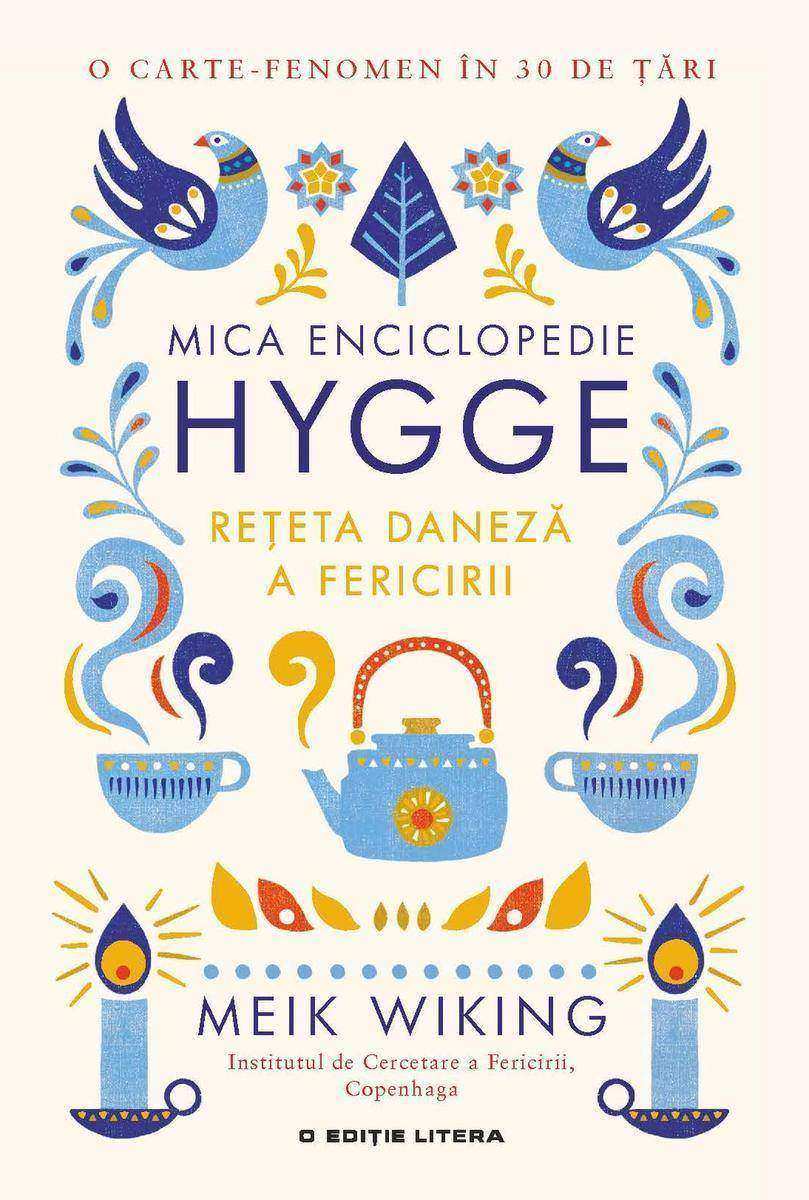
Mica enciclopedie Hygge
¥86.00
Проверенные годами секреты наших бабушек и опытных современных специалистов! Чтобы получить срочный совет в любой экстренной ситуации или упростить себе ежедневную работу по дому, достаточно просто раскрыть книгу. ? Как сервировать стол к фуршету ? Как выбрать самое свежее мясо, рыбу, молочные продукты ? Какие продукты в рецепте можно заменить и чем ? Как удалить сложные пятна с одежды и мебели ? Как быстро устранить накипь и остатки пригоревшей пищи с посуды ? Как обустроить маленькую комнату, кухню и балкон ? Как избавиться от вредителей сада и огорода ? Когда высаживать рассаду.Proverennye godami sekrety nashih babushek i opytnyh sovremennyh specialistov! Chtoby poluchit' srochnyj sovet v ljuboj jekstrennoj situacii ili uprostit' sebe ezhednevnuju rabotu po domu, dostatochno prosto raskryt' knigu. ? Kak servirovat' stol k furshetu ? Kak vybrat' samoe svezhee mjaso, rybu, molochnye produkty ? Kakie produkty v recepte mozhno zamenit' i chem ? Kak udalit' slozhnye pjatna s odezhdy i mebeli ? Kak bystro ustranit' nakip' i ostatki prigorevshej pishhi s posudy ? Kak obustroit' malen'kuju komnatu, kuhnju i balkon ? Kak izbavit'sja ot vreditelej sada i ogoroda ? Kogda vysazhivat' rassadu.
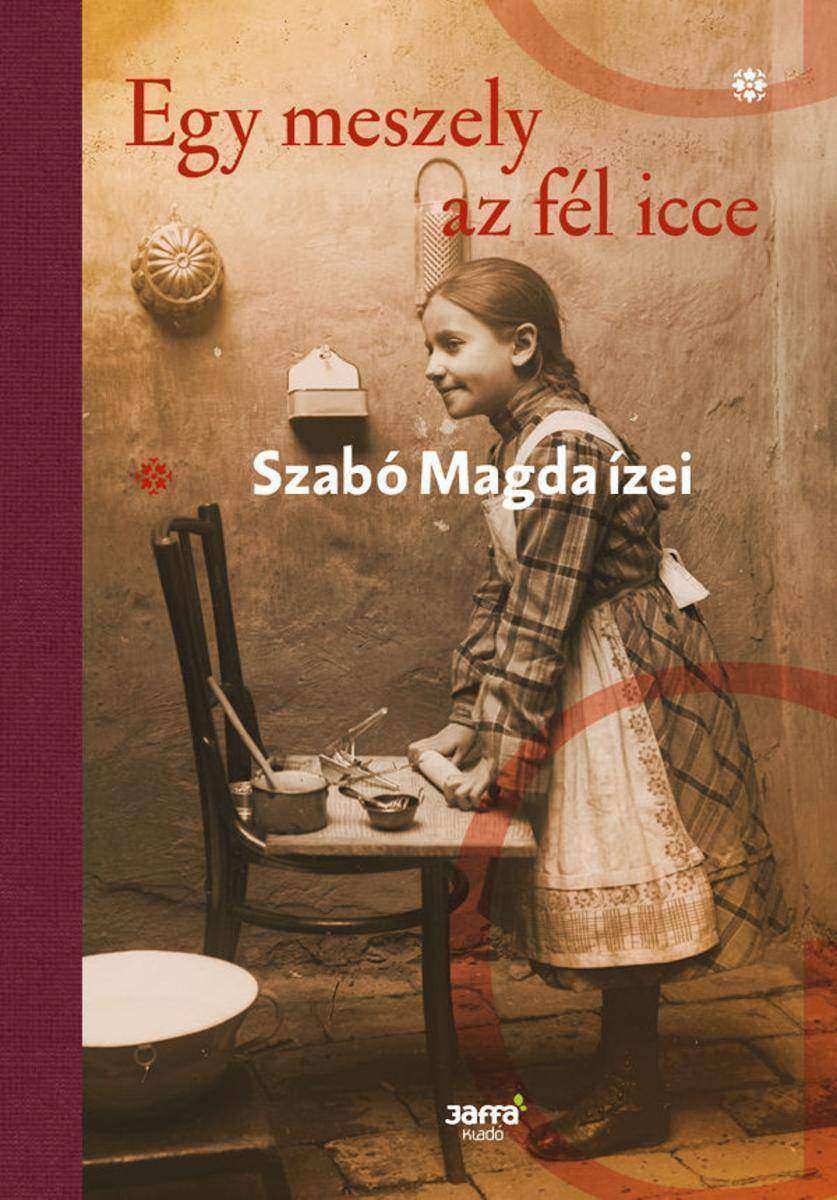
Egy meszely az fél icce
¥81.75
Katherine Shaw egész életét a balettnek szentelte. Mindig is arról álmodott, hogy hivatásos balerina lesz, ám tizenkilenc évesen úgy d?nt, hogy még szüksége van pár évre, miel?tt meg tudna birkózni egy társulattal. ?gy legjobb barátjával, Alexanderrel együtt egyetemre megy. Persze az új élet, távol a szül?kt?l nem k?nny?. Kat kétségbeesetten vágyik arra, hogy végre lány barátja is legyen. Belinda, a szobatársn?je ezt kihasználva, el?sz?r a legjobb barátn?je, majd a legnagyobb riválisa lesz. Katherine-nek azonban nemcsak Belindával kell megküzdenie, hanem arról is d?ntenie kell, hogy végre megvalósítja nagy álmát, és a Királyi Balettben táncol, vagy átadja magát a szerelemnek.
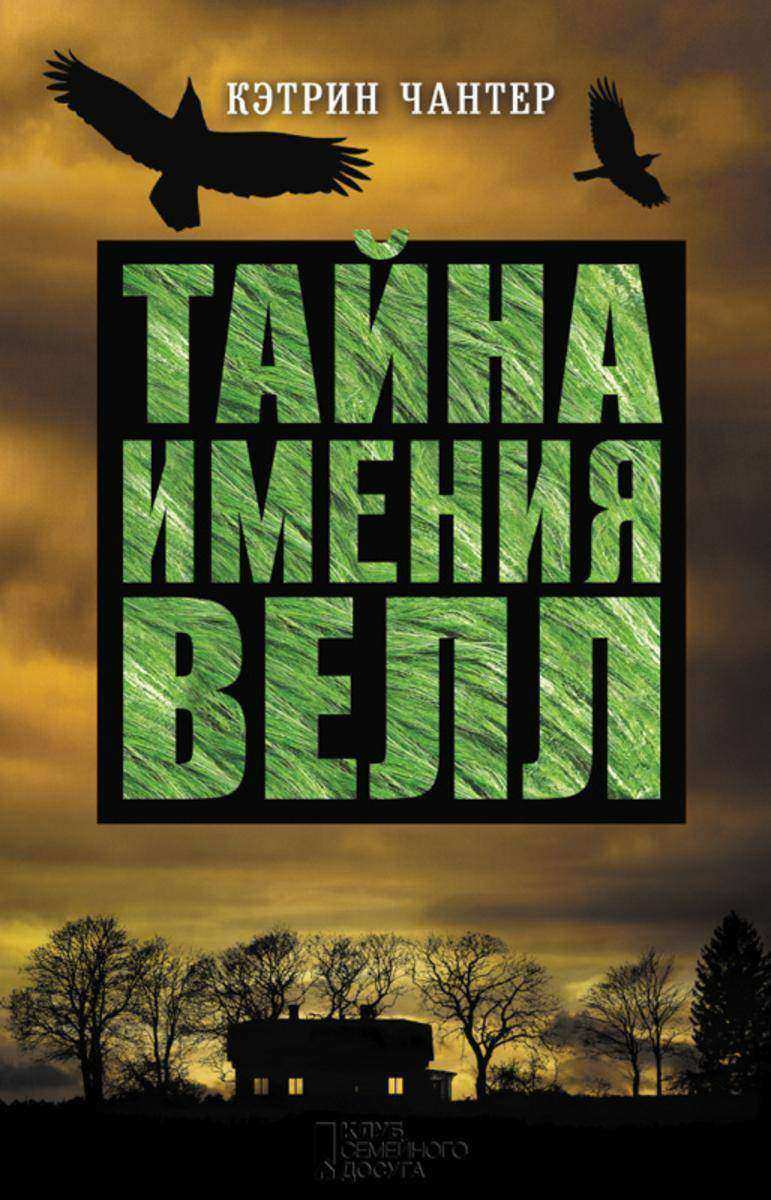
Тайна имения Велл (Tajna imenija Vell)
¥18.07
У чому причина стр?мкого економ?чного злету Китаю? Чому не можна беззастережно дов?ряти думц? нео?нституц?онал?ст?в? Де ?золота середина? в керуванн? економ?кою держави? На ц? та ?нш? питання шука? в?дпов?дь репортер Financial Times Джо Стадвелл. В?н анал?зу? три головн? складники усп?шно? економ?ки: с?льськогосподарську пол?тику, промислове виробництво ? розпод?л ф?нансування. У приц?л? авторсько? уваги Япон?я, П?вденна Корея, Тайвань, ?ндонез?я, Малайз?я, Та?ланд, Ф?л?пп?ни, В’?тнам ? Китай. Анал?зуючи б?знес цих кра?н, автор показу?, що спрацювало в Аз??, а що н?

Сто рок?в боротьби
¥0.01
Esta publica??o é eminentemente didática e útil aos vários profissionais da área da saúde. A obra está organizada em duas partes. A primeira, dedicada à teoria da Psicologia da Saúde, visa dar ao leitor um panorama geral dos aspectos que embasam a compreens?o da Segunda parte do livro voltada aos trabalhos de pesquisa desenvolvidos pelos pesquisadores da Psicologia da Saúde, aqui reunidos.

Повелитель теней (Povelitel' tenej)
¥26.98
Уяв?ть, що ви народилися у перш?й половин? ХХ стол?ття в США ? раптом виявили, що люди, маючи рад?о, газети, корабл? та л?таки, дос? живуть у будинках, зведених у римському стил?. Вони не сприймають н?чого, кр?м фронтон?в, химерних статуеток, карниз?в та колон… В?дмовляються бачити прогрес. Саме в так?й ситуац?? опиня?ться головний герой роману — талановитий арх?тектор Говард Рорк. В?н нав?ть не намага?ться в?дкрити оточенню оч? на абсурдн?сть ситуац??, а просто викону? свою роботу. Таких як в?н — тих, хто ма? власну думку — сусп?льство кличе его?стами, вважа? ?хворими? ? неправильними. Перед ним зачиняють двер? ? вс?ляко намагаються виштовхнути подал? в?д еп?центру арх?тектурного життя. Що ж вчинить герой та чи справд? бути его?стом погано?

Плетем коврики из ткани (Pletem kovriki iz tkani)
¥17.74
Нова сер?я ?Класика? знайомить з найвидатн?шими зразками св?тово? та укра?нсько? л?тератури. Герберт Джордж Веллс (1866-1946) – англ?йський письменник, публ?цист, класик науково? фантасти?ки. Перейнявши традиц?ю свого попередника Жуля Верна ? часто пере?гукуючись ?з ним, в?н продовжив захопливу розв?дку майбутнього. ?Машина часу? (1895) стала першим науково-фантастичним романом письменника. У цьому твор? ген?альний винах?дник уможливлю? мандр?вки людини у час? й простор?. За десять рок?в до Ейнштейна Веллс назвав реальн?сть чотиривим?рною. Паралельн? св?ти, антиграв?тац?я, прискорювач темпу життя також вперше з’явилися у текстах фантаста-експериментатора, як ? люди на М?сяц?. У роман? ?Невидимець? (1897) вчений Грифф?н, п?сля тривалих наукових досл?джень, в?дкрив та?мницю перетворення людини в невидимця. Став?ши невидимим, герой здобува? необмежену владу над людьми, що в?н ? намага?ться використати лише для сво?х ?нтерес?в. Непом?тно для себе чолов?к перетворю?ться на злочинця, а пот?м ? на жертву, що мусить боро?тися за виживання. Для широкого кола читач?в.
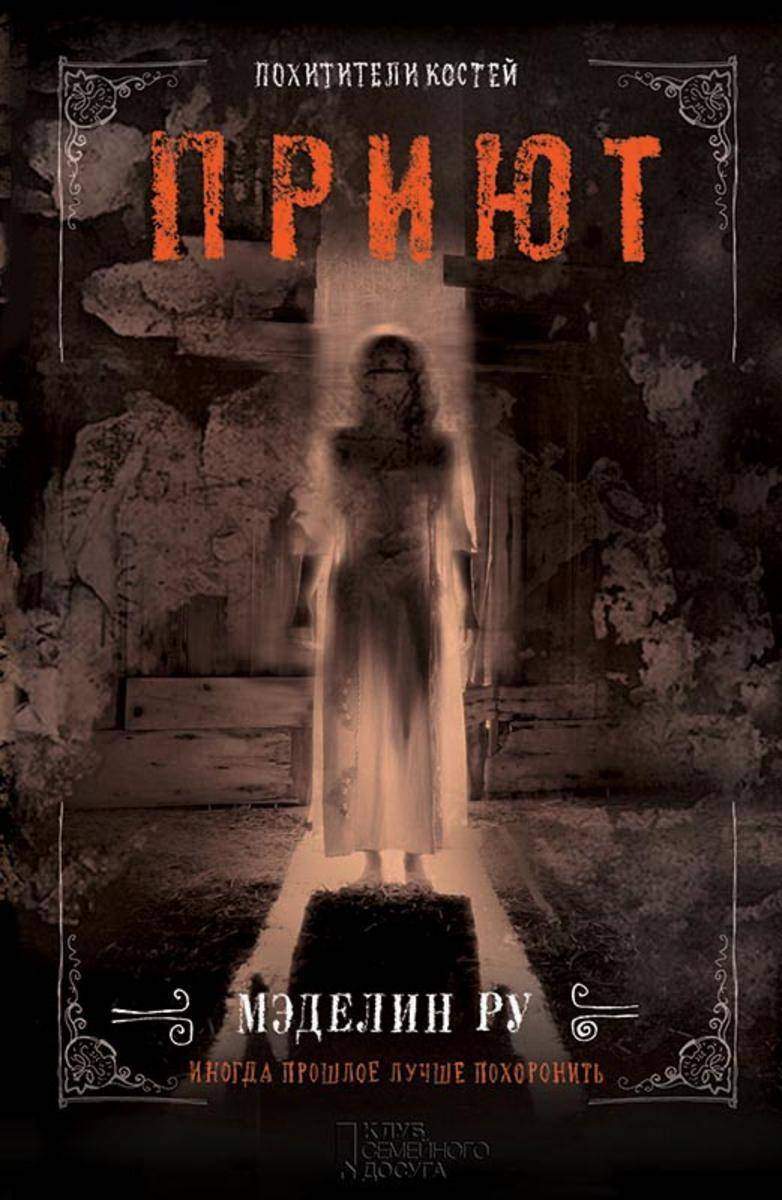
Приют. Похитители костей (Prijut. Pohititeli kostej)
¥26.65
Йшов четвертий р?к св?тово? в?йни. Втомлений под?ями генерал-лейтенант рос?йсько? ?мператорсько? арм?? Павло Петрович Скоропадський, нащадок старовинно? старшинсько? фам?л??, ще не знав, що стане гетьманом незалежно? Укра?нсько? Держави.??Епоха зм?н, яку самовбивчо наближали революц?онери вс?х мастей, перетворилася на апокал?псис, в?йну вс?х проти вс?х, але Скоропадському стало духу взяти на себе невдячну ношу державного буд?вництва. Спроба зак?нчилася ц?лковитим ? оч?куваним провалом, але окрем? починання гетьмана дотривали до наших дн?в: саме йому Укра?на завдячу?, наприклад, Академ??ю наук.
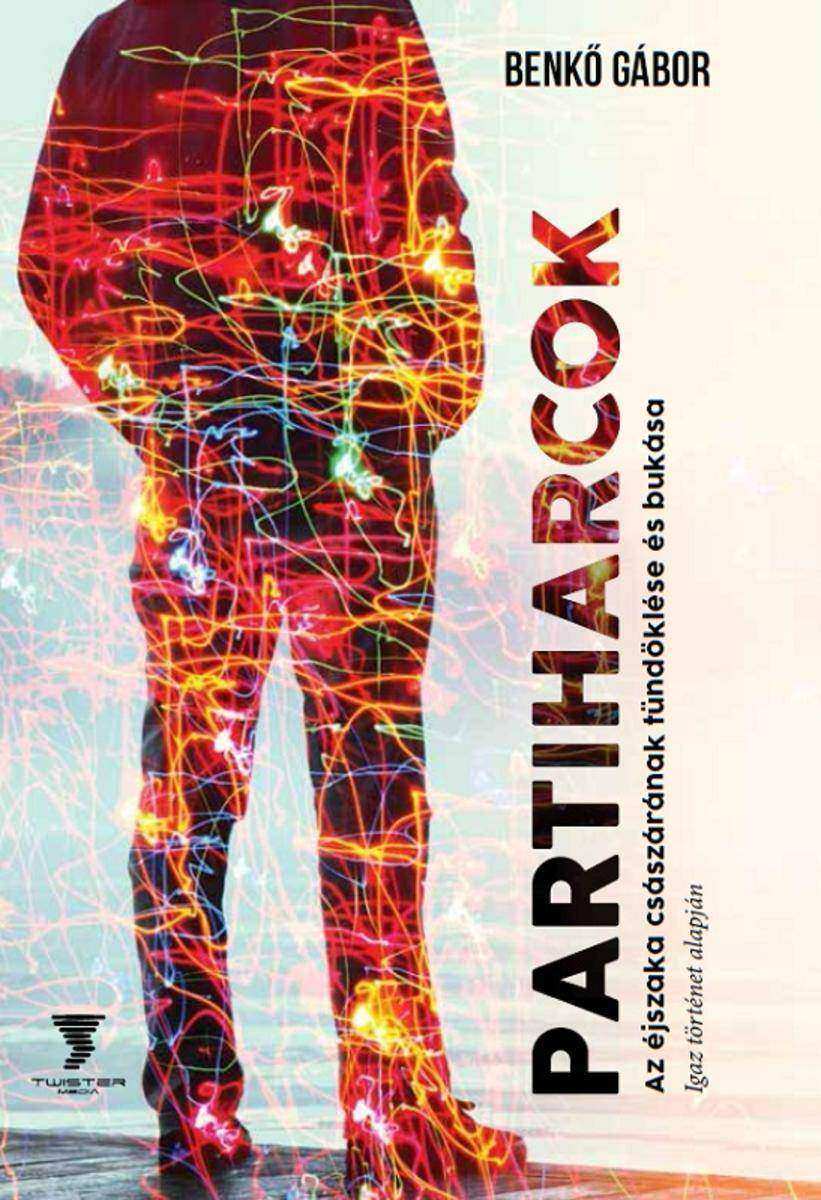
Partiharcok
¥57.31
Сол?ння. Квашення. Маринування ? Соте ? ?кра ? Соуси ? Салати ? Асорт? ? Закуски ? Компоти ? Приправи Нов? ориг?нальн? рецепти до сезону консервац??! Вам не буде потр?бно багато часу ? сил, щоб приготувати ц? смакоту як холодним, так ? гарячим способом консервування. Ви зможете зберегти в?там?ни ? корисн? речовини в овочах ? фруктах ? круглий р?к балувати себе ? близьких апетитними заготовками. Приготуйте перець, фарширований яблуками, консервовану кукурудзу, овочеве асорт?, н?жн? пом?дорчики з аличею, гостреньк? патисони з часником, яг?дний мармелад або тане в рот? сливове повидло ? переконайтеся - це дуже смачно! Sol?nnja. Kvashennja. Marinuvannja ? Sote ? ?kra ? Sousi ? Salati ? Asort? ? Zakuski ? Kompoti ? Pripravi Nov? orig?nal'n? recepti do sezonu konservac??! Vam ne bude potr?bno bagato chasu ? sil, shhob prigotuvati c? smakotu jak holodnim, tak ? garjachim sposobom konservuvannja. Vi zmozhete zberegti v?tam?ni ? korisn? rechovini v ovochah ? fruktah ? kruglij r?k baluvati sebe ? bliz'kih apetitnimi zagotovkami. Prigotujte perec', farshirovanij jablukami, konservovanu kukurudzu, ovocheve asort?, n?zhn? pom?dorchiki z alicheju, gostren'k? patisoni z chasnikom, jag?dnij marmelad abo tane v rot? slivove povidlo ? perekonajtesja - ce duzhe smachno!




 购物车
购物车 个人中心
个人中心



